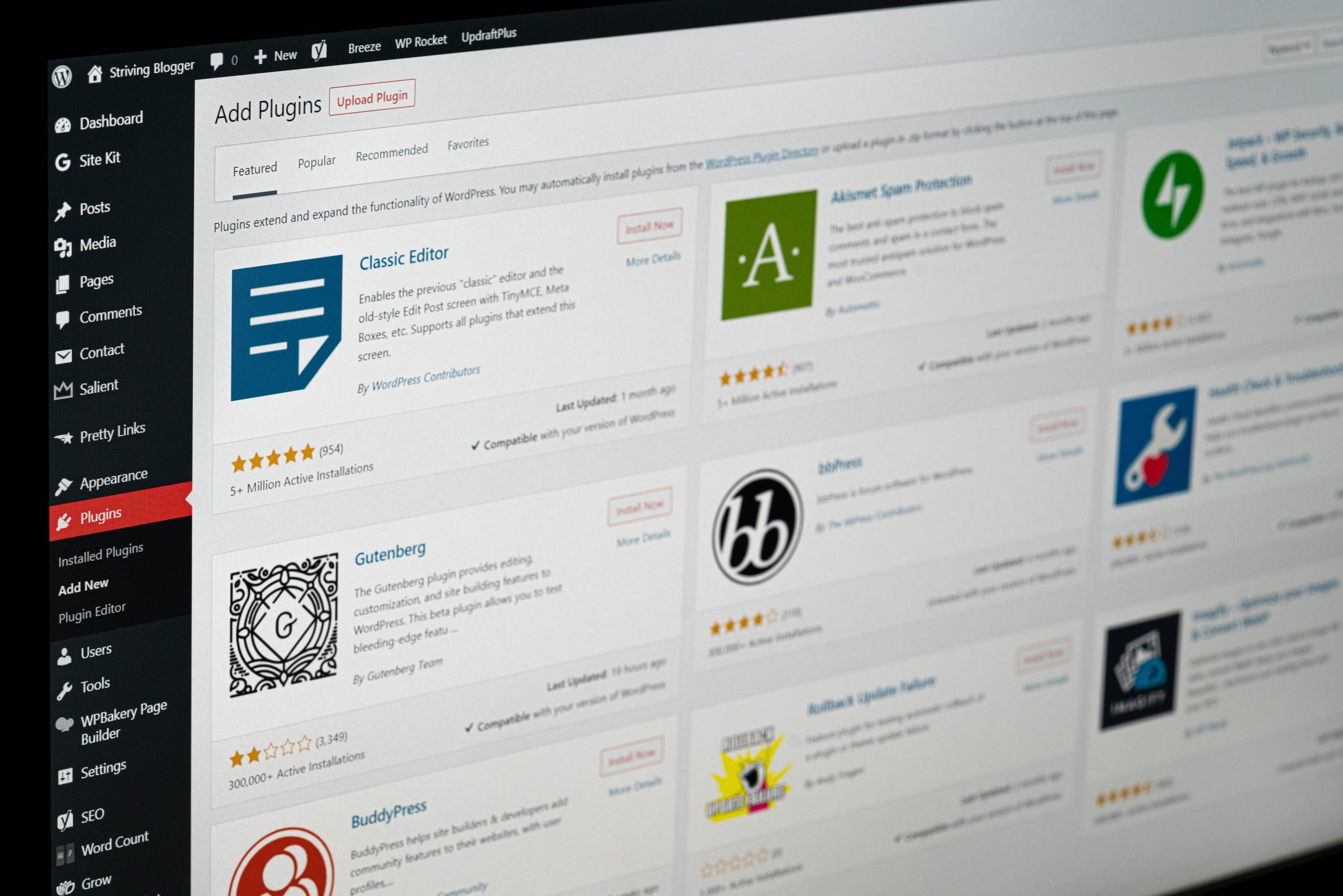In today’s globalized world, having a multilingual website can greatly expand your reach and attract a wider audience. However, manually translating every piece of content on your WordPress website can be an incredibly time-consuming and expensive task. That’s where automatic translation tools come in. With the help of these innovative tools, you can effortlessly translate your WordPress website content into multiple languages within minutes. In this article, we will explore the benefits of using automatic translation for your WordPress website and provide you with step-by-step instructions on how to implement it effectively. So sit back, relax, and get ready to take your online presence to new heights with automated translations!
Why translate WordPress website content?
Translating your WordPress website content is a crucial step to expanding your reach and engaging with a global audience. By making your website available in multiple languages, you break down language barriers and open the door to new opportunities. It allows you to connect with potential customers who don’t speak English or those who prefer to browse in their native language.
Not only does translating your website content help you reach a wider audience, but it also improves the user experience. People tend to feel more comfortable browsing and making purchases on websites that are available in their preferred language. Through translation, you can effectively communicate with users, increase their trust in your brand, and enhance the overall user journey. Moreover, having translated content is essential for international SEO since search engines prioritize websites that offer relevant localized versions.
In today’s digital world where everyone wants information at their fingertips instantly, providing translated content helps you stand out from your competitors. It shows that you value cultural diversity and strive to meet the needs of different audiences worldwide. So why limit yourself to just one language when translating your WordPress website is an accessible and cost-effective way to foster growth and increase customer engagement? Start tapping into new markets by embracing multilingualism today!

Understanding automatic translation options
One of the key challenges in translating website content is capturing the nuances and cultural context of different languages. Automatic translation options have emerged as a convenient solution, but they come with their limitations. While these tools can instantly translate text into various languages, they often lack accuracy and precision. This means that important details, idioms, or jokes may be lost in translation.
To mitigate this issue, it is important to strike a balance between using automatic translation tools and human intervention. For example, you can use machine translations as a starting point and then have a professional translator review and refine the content. This approach not only ensures higher quality translations but also helps maintain the integrity of your brand’s message across different languages.
Understanding the benefits and limitations of automatic translation options is essential for navigating multilingual websites effectively. While these tools provide quick translations that can save time and effort, it is crucial to recognize their limitations in capturing cultural nuances accurately. By combining automated translation with skilled human intervention, you can deliver high-quality translated content that resonates with your global audience while upholding your brand’s identity.
Choosing the right translation plugin
One of the most important aspects to consider when translating your WordPress website content automatically is choosing the right translation plugin. While there are a plethora of options available, not all plugins are created equal. It’s crucial to do your homework and find a reliable translation plugin that suits your needs.
When selecting a translation plugin, it’s essential to consider factors such as accuracy, ease of use, compatibility with your theme and other plugins, language support, and customer reviews. Accuracy is paramount because you want to ensure that your translated content accurately conveys the original message. Additionally, an easy-to-use interface can save you valuable time and frustration during the translation process.
Compatibility with other plugins is another vital aspect to bear in mind. Make sure that the translation plugin seamlessly integrates with any additional functionalities or features you have implemented on your WordPress site. Furthermore, double-check if the plugin supports all the languages you require for translating your content effectively.
Lastly but importantly, reading customer reviews can provide valuable insights into how well a particular translation plugin works in practice. Look for feedback from users who have experience using the plugin for similar purposes as yours – their experiences can help steer you towards making an informed decision.
In conclusion, choosing the right translation plugin plays a crucial role in achieving automated translations for your WordPress website.

Setting up automatic translation in WordPress
Setting up automatic translation in WordPress can save you a lot of time and effort when it comes to translating your website content. One popular plugin that can help with this is WPML (WordPress Multilingual Plugin). With WPML, you can automatically translate your website’s pages, posts, and other content into multiple languages at the click of a button. This not only makes your content accessible to a wider audience but also makes it easier for search engines to crawl and index your site in different languages.
Another useful tool for automatic translation is Google Translate. By installing the Google Language Translator plugin on your WordPress site, you can add a language switcher widget that allows users to select their preferred language. The plugin uses Google’s powerful translation technology to automatically translate your website content into different languages on the fly. However, it is worth noting that while this method may be convenient, automatic translations may not always be accurate or capture the nuance of each language.
In conclusion, setting up automatic translation in WordPress can greatly enhance the reach and accessibility of your website. Whether using plugins like WPML or relying on services like Google Translate, automating the translation process saves time and effort while expanding your audience base globally. However, it’s important to keep in mind that perfection cannot always be achieved through automation alone, so manual review may still be necessary for crucial translations requiring accurate representation of intent and meaning.
Managing and customizing translated content
Managing and customizing translated content is crucial for creating a seamless experience for your website visitors. While automatic translation can save time and effort, it’s important to review and edit the translations to ensure accuracy and clarity. One way to manage translations is by using a translation management system (TMS) that allows you to track the progress of translations, collaborate with translators, and easily make changes as needed.
Customizing translated content goes beyond just making sure the words are accurately translated. It involves adapting the content to the cultural and linguistic nuances of your target audience. This may include changing images, graphics, or even formatting the layout differently. By taking these additional steps, you can create a personalized experience that resonates with your international audience.
When managing and customizing translated content, it’s vital to maintain consistency across all languages on your website. Using translation memories (TM) can help achieve this by storing previously translated phrases or sentences for future use. Consistent terminology not only enhances user experience but also reinforces brand identity.
By combining efficient management practices with careful customization efforts, you can provide an engaging multilingual experience for users visiting your WordPress website in different languages. Taking the time to fine-tune translations and adapt content shows dedication towards fulfilling their needs while maintaining brand integrity.

Considerations and limitations of automatic translation
While automatic translation has made significant advancements in recent years, it is crucial to understand its considerations and limitations. One of the main considerations is accuracy. While the translation algorithms have improved, they are still not perfect and may produce mistranslations or misinterpretations. This can be especially problematic when dealing with complex or technical content that requires precise and nuanced language.
Another consideration is context. Automatic translation tools often struggle with understanding the context of a sentence or phrase, leading to inaccurate translations. Additionally, cultural nuances and idiomatic expressions can be lost in machine translations, resulting in messages that may sound awkward or inappropriate to native speakers.
Moreover, automatic translation tools have limitations in terms of language support. While popular languages like English, Spanish, French, and Chinese are well-supported by these tools, less widely spoken languages might not receive the same level of accuracy or support.
These considerations and limitations highlight the importance of using automatic translation as a starting point rather than relying solely on it for translating website content. A human translator can provide invaluable quality assurance by reviewing and correcting any inaccuracies while ensuring that the translated content maintains its intended meaning within the appropriate cultural context.
Conclusion: Exploring the possibilities of automated website translation
In conclusion, automated website translation holds immense potential for businesses looking to expand their reach and cater to an international audience. While it may not be a perfect solution, advancements in machine learning and natural language processing have made significant strides in improving the accuracy and quality of automated translations. This means that even small businesses with limited resources can now tap into global markets without the need for extensive manual translation efforts.
However, it is important to acknowledge the limitations of automated translations. Despite its improvements, AI-powered translation tools still struggle with capturing context, cultural nuances, and idiomatic expressions accurately. Localization plays a crucial role in ensuring that translated content resonates with the target audience and avoids potential misinterpretations or misunderstandings.
Ultimately, businesses must strike a balance between convenience and quality when considering automated website translation. While machine translation can speed up the process and reduce costs significantly, it is essential to review and fine-tune translated content manually to maintain clarity, coherence, brand voice, and cultural sensitivity. By leveraging both technological advancements and human expertise in localization, businesses can harness the true power of automated website translation for seamless global expansion.


































